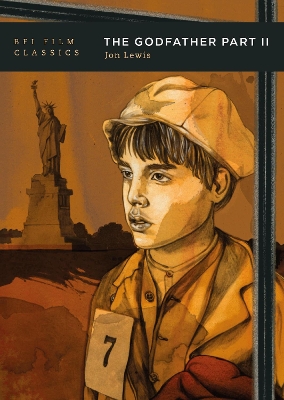BFI Film Classics
2 total works
Francis Ford Coppola's The Godfather (1972) marked a transition in American film-making, and its success – as a work of art, as a creative 'property' exploited by its studio, Paramount Pictures; and as a model for aspiring auteurist film-makers – changed Hollywood forever.
Jon Lewis's study of The Godfather begins with a close look at the film's audacious visual style (the long, theatrical set pieces; the chiaroscuro lighting, the climactic montage paralleling a family baptism with a series of brutal murders). The analysis of visual style is paired with a discussion of the movie's principal themes: Vito and Michael's attempt to balance the obligations of business and family, their struggle with assimilation, the temptations and pitfalls of capitalist accumulation, and the larger drama of succession from father to son, from one generation to the next.
The textual analysis precedes a production history that views The Godfather as a singularly important film in Hollywood's dramatic box-office turnaround in the early 1970s. And then, finally, the book takes a long hard look at the gangster himself both on screen and off. Hollywood publicity attending the gangster film from its inception in the silent era to the present has endeavoured to dull the distinction between the real and movie gangster, insisting that each film has been culled from the day's sordid headlines. Looking at the drama on screen and the production history behind the scenes, Lewis uncovers a series of real gangster backstories, revealing, finally, how millions of dollars of mob money may well have funded the film in the first place, and how, as things played out, The Godfather saved Paramount Studios and the rest of Hollywood as well.
Jon Lewis's study of The Godfather begins with a close look at the film's audacious visual style (the long, theatrical set pieces; the chiaroscuro lighting, the climactic montage paralleling a family baptism with a series of brutal murders). The analysis of visual style is paired with a discussion of the movie's principal themes: Vito and Michael's attempt to balance the obligations of business and family, their struggle with assimilation, the temptations and pitfalls of capitalist accumulation, and the larger drama of succession from father to son, from one generation to the next.
The textual analysis precedes a production history that views The Godfather as a singularly important film in Hollywood's dramatic box-office turnaround in the early 1970s. And then, finally, the book takes a long hard look at the gangster himself both on screen and off. Hollywood publicity attending the gangster film from its inception in the silent era to the present has endeavoured to dull the distinction between the real and movie gangster, insisting that each film has been culled from the day's sordid headlines. Looking at the drama on screen and the production history behind the scenes, Lewis uncovers a series of real gangster backstories, revealing, finally, how millions of dollars of mob money may well have funded the film in the first place, and how, as things played out, The Godfather saved Paramount Studios and the rest of Hollywood as well.
Francis Ford Coppola's The Godfather, Part II (1974) is a magisterial cinematic work, a gorgeous, stylized, auteur epic, and one of the few sequels judged by many to be greater than its predecessor. This despite the fact that it consists largely of meetings between aspiring 'Godfather' Michael Corleone and fellow gangsters, politicians and family members. The meetings remind us that the modern gangster’s success is built upon inside information and on strategic planning. Michael and his father Vito’s days resemble those of the legitimate businessmen they aspire or pretend to be.
Jon Lewis's study of Coppola's masterpiece provides a close analysis of the film and a discussion of its cinematic and political contexts. It is structured in three sections: “The Sequel,” “The Dissolve,” and “The Sicilian Thing” – accommodating three avenues of inquiry, respectively: the film’s importance in and to Hollywood history, its unique, auteur style and form; and its cultural significance. Of interest, then, is New Hollywood history, mise-en-scene, and a view of the Corleone saga as a cautionary capitalist parable, as a metaphor of the corruption of American power, post-Vietnam, post-Watergate.
Jon Lewis's study of Coppola's masterpiece provides a close analysis of the film and a discussion of its cinematic and political contexts. It is structured in three sections: “The Sequel,” “The Dissolve,” and “The Sicilian Thing” – accommodating three avenues of inquiry, respectively: the film’s importance in and to Hollywood history, its unique, auteur style and form; and its cultural significance. Of interest, then, is New Hollywood history, mise-en-scene, and a view of the Corleone saga as a cautionary capitalist parable, as a metaphor of the corruption of American power, post-Vietnam, post-Watergate.

